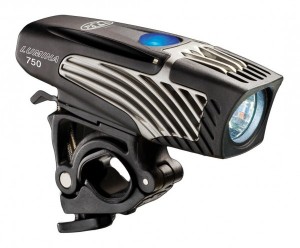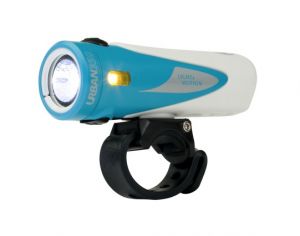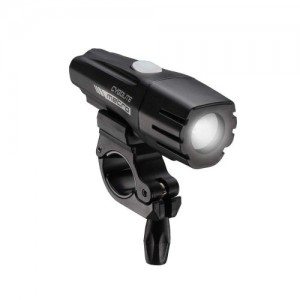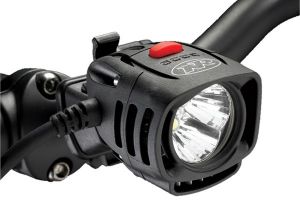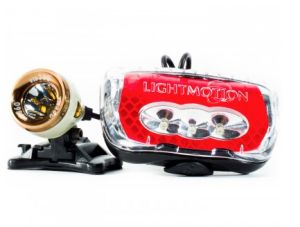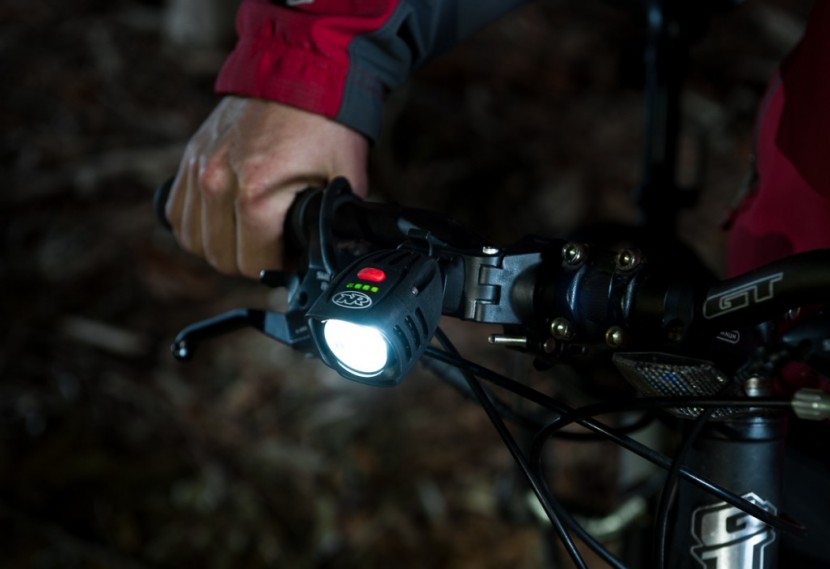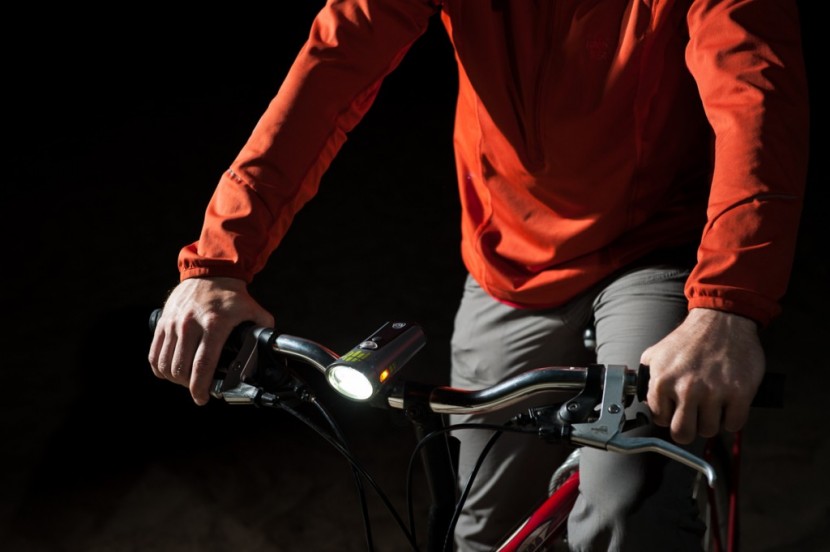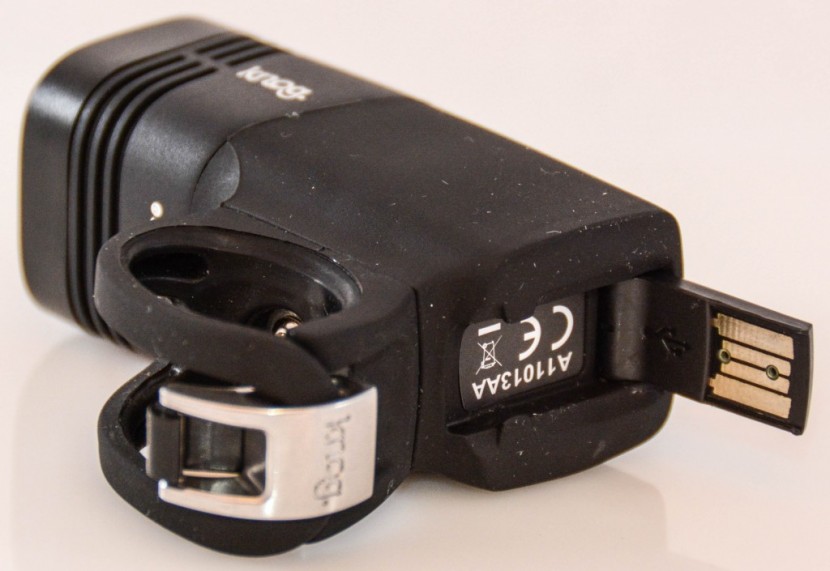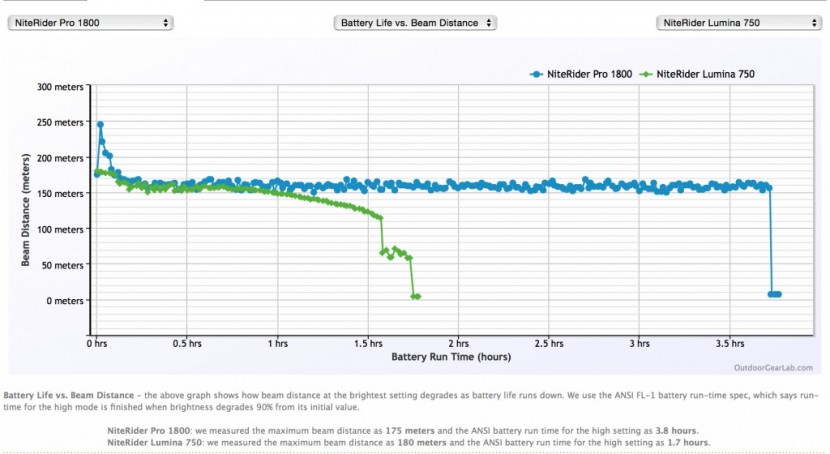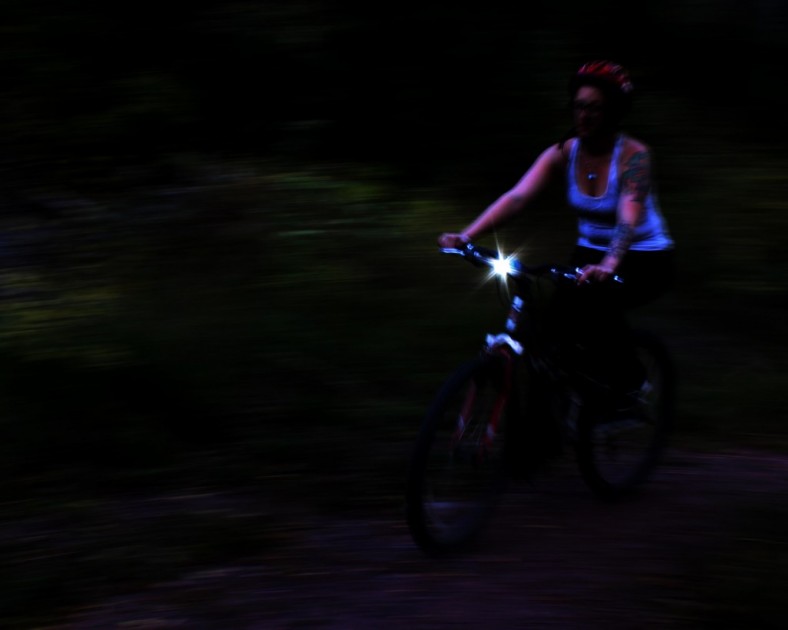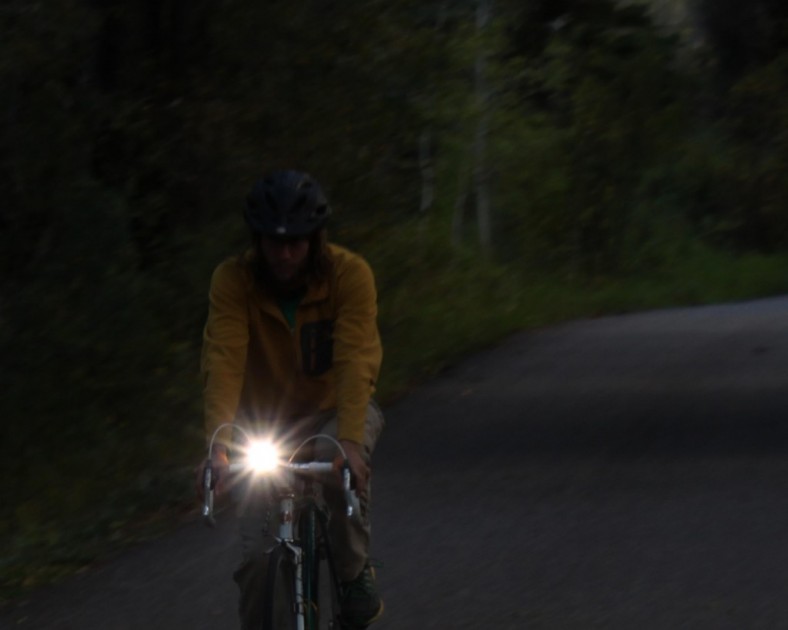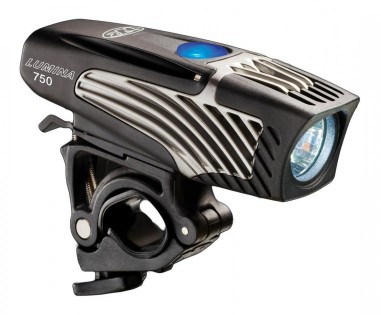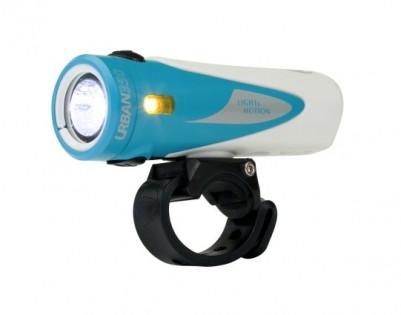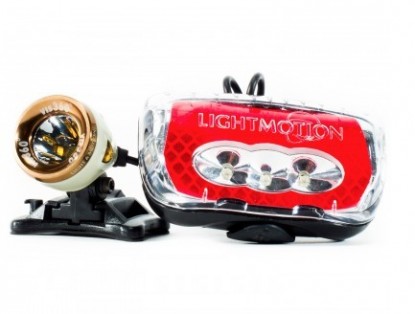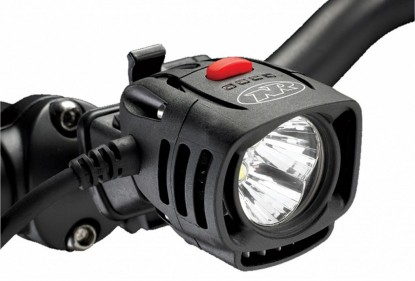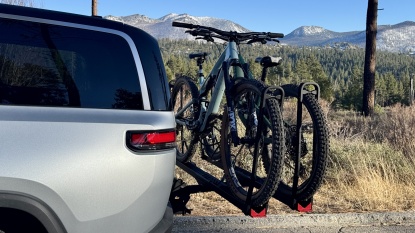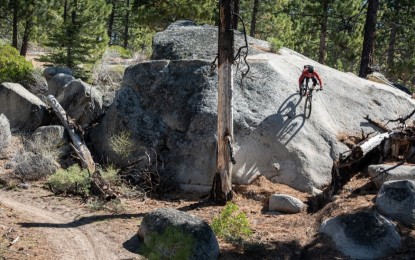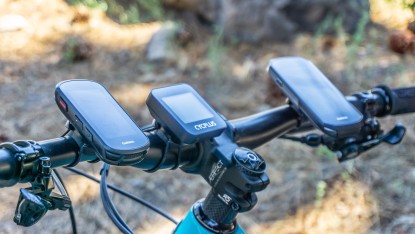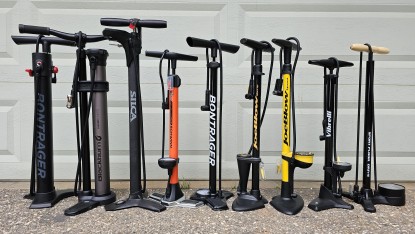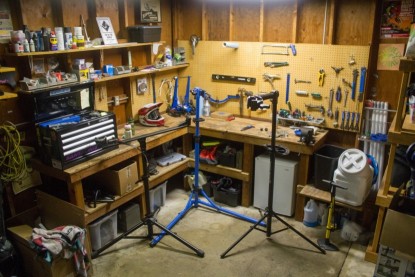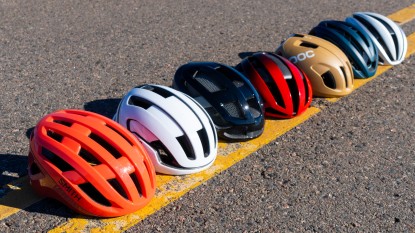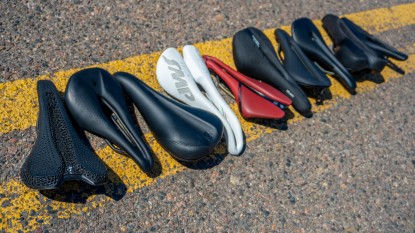
Our Picks of Bike Lights
Best Overall Bike Light
NiteRider Lumina 750
The NiteRider Lumina 750 was our favorite light overall from the models we tested. The competition was tight, but the 750 edged ahead because of its bright beam and, more importantly, the quality of that beam. The Expilion 850 lagged just behind because it casts a more narrow, tunnel-like beam compared to the Lumina's broad, even beam. This light is also very easy to remove from the handlebar mount when getting off the bike. The one downside to the Lumina is the short battery life, just 1.7 hours on its high setting.
Read review: NiteRider Lumina 750
Best Budget Bike Light for Portability
Light and Motion Urban 350
The competition was pretty tight for this award winner as well. The real battle was between the Light and Motion Urban 350 and the Cyrgolite Metro 600 out of all the contestants that cost $60 or less; though this light walked away with this trophy because of its awesome bright, wide beam pattern, swivel mount, and we love the amber side lights for added visibility. Though the Metro 400 has longer battery life and shines a bit further, the Urban 350 beat it out because of its more even and wide beam quality where the Metro 400 is very narrow, making it hard to see in your periphery. This is also one of the most portable models we used with easy installation and removal.
Read review: Light and Motion Urban 350
Best Budget Bike Light for Brightness
Cygolite Metro 400
While not a top scoring light, the Metro 400 delivers solid brightness for a street price of around $25. It's easy to charge and is relatively quick to get on and off the handlebars.
The 1.7-hour battery life is relatively low and requires constantly removing the light from the handlebars. While this is not a big pain, it's more involved than the Light and Motion Urban 350. While the 350 had an even shorter battery life, it is much faster and easier to remove from the handlebars to charge. Both lights have a similar street price. If you prefer beam quality and portability, go with the 350. If you want maximum brightness, go with the Metro 400.
Read review: Cygolite Metro 400
Best for Mountain Biking
NiteRider Pro 1800
Riding around with a very bright light that has a long battery life and a near perfect beam pattern is a true pleasure. The NiteRider Pro 1800 is by far the best MTB trail model we've tested. If you want a light for mountain biking look no further. This thing brightens up the night better than one of your car's headlights!! However, unless you rarely remove a light from your bike, this is a very poor choice for commuting because it's the largest, heaviest, and most difficult to install of all 16 contestants tested. For many people, this is only suited for off-road use.
Read review: NiteRider Pro 1800
Best for Helmet Use
Light and Motion Vis 360+
Of all the portable designs tested, our testers agree that the Light and Motion Vis 360+ made them feel the safest. This amazing helmet mount product lets you point the beam wherever you turn your head to look, which is incredibly useful, because you can see around corners, find street signs and house numbers, and shine it at oncoming and turning cars so they know where you are. The design also has two amber side beams, which is customary with all the Light and Motion lights we tested, and a built-in red tail light… Just as its name suggests, 360-degree visibility! To boot, it's compact, lightweight, very quick to install and remove, and its battery lasts twice as long as the Lumina 550's. If you are open to trying out a helmet mount product we highly recommend the Vis 360+ for both commuting and mountain biking.
Read review: Light and Motion Vis 360+
Compare Products
Analysis & Test Results
Below we discuss our results for the criteria used to evaluate each product. We'll describe methodology here, and summarize our four award-winning contenders at the bottom of this page.
What's the Best Value?
As cyclists are a broad and diverse group, so are their needs in a bike light. You might require something that just satisfies minimum requirements to avoid paying a fine while riding well-lit city streets, or you might have a habit of running your favorite mountain bike trail in pitch darkness and need something to illuminate every tree root well ahead.
At the lower end of the price range, a little bit more money can buy you a lot more performance, but at the high end the performance gains come at a higher cost. For example, the NiteRider Pro 1800 comes out a few points ahead of its closest competitor in overall score, but at an over $200 higher price tag. For more modest budgets, there are a range of other award winners from $45 to $140, such as the Light and Motion Urban 350.
Brightness
The brightness of a bike light is generally considered to be the most important criteria for safe nighttime riding, and is the category in which we placed the most amount of weight. No matter your objectives, it is ideal to seek out a light that produces a bright, wide, and evenly lit beam.
Maximum beam distances in this review range from the CatEye HL-EL 135 at 34-meters to the Bright Eyes Rechargeable 1200 with a distance of 189-meters. The Allen Sports ASL5XR allows you to change the beam pattern with a zoom feature. In the full spotlight mode, we measured a beam distance of 215-meters and all the way down to a shallow 35-meters at its widest setting.
The NiteRider Pro 1800 is the absolute brightest, directly followed by the Light and Motion Taz 1500, NiteRider Lumina 750, and the Cygolite Expilion 850. The amount you spend will have a direct correlation to beam distance. All the products we tested over $60 manage to shine at least 100 meters distance except for the Light and Motion Vis 306+ which maxed out at 72 meters. In the less than $60 category, only one contender succeeded in shining the full length of a football field: the Allen Sports, but only when zoomed into a very narrow beam pattern. However, the beam is so narrow that it was not competitive at that setting. Most of the low-cost competition selling for less than $60 project beams less than 50 meters.
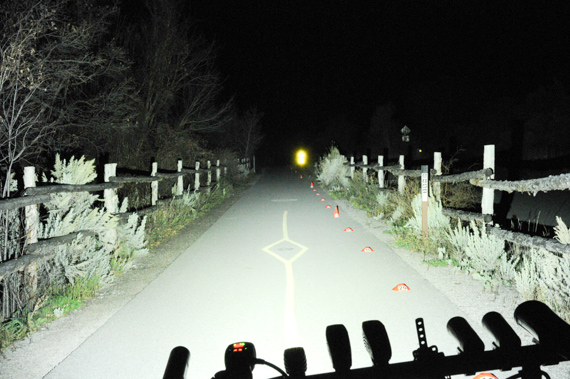
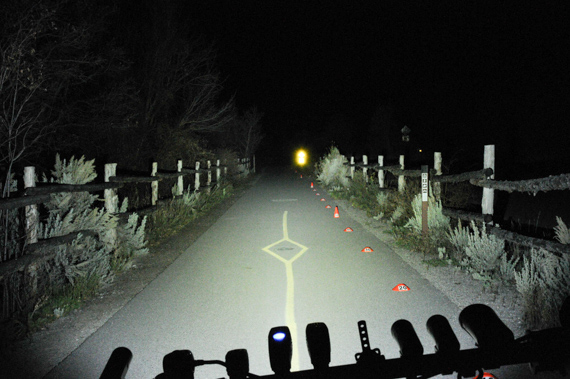
As you can see in the photo comparison below, the less expensive NiteRider Lumina 550 casts a light pretty far, but the Cygolite 850 shines slightly farther with a much broader and even beam pattern.
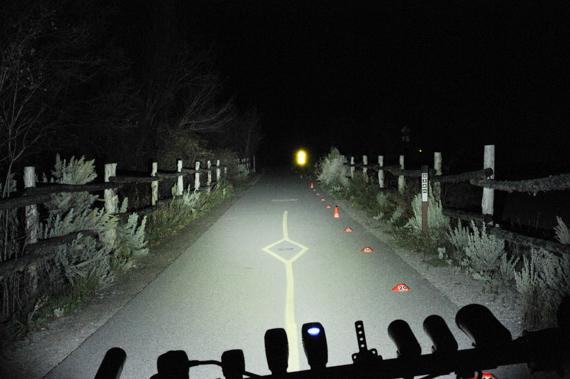
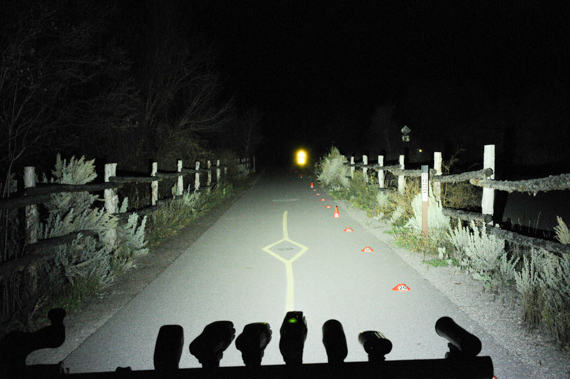
In the budget category, we found the Light and Motion Urban 350 hits a sweet spot of balancing reasonable price (retailing around $60), and yet still proving to be a strong performer. The typical competitor in the $20-60 had a more narrow or dim beam, or both. Not so with the Urban 350, which produced a bright wide beam, blowing away the competitors in the under $60 street price range. The Cygolite Metro 400 costs nearly the same as the Urban 350, but produces a much more narrow, and thus less useful, beam.
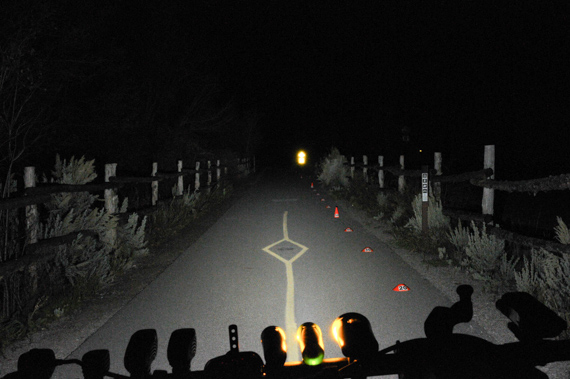
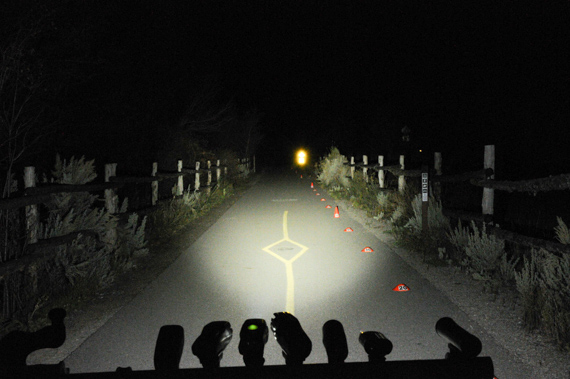
For those who mostly ride in well lit areas and are looking for a small and effective safety product, the lightweight Knog Blinder Arc 1.7 is a great choice. While it only earns a 6 out of 10 on beam quality, most of the low-cost competition score much worse due to narrow beam or optical anomalies. While the Knog Blinder Arc is not very bright (earning it only 3 out of 10 on brightness), the beam is wide, evenly lit, and in strobe mode presents a visible alert to oncoming traffic.
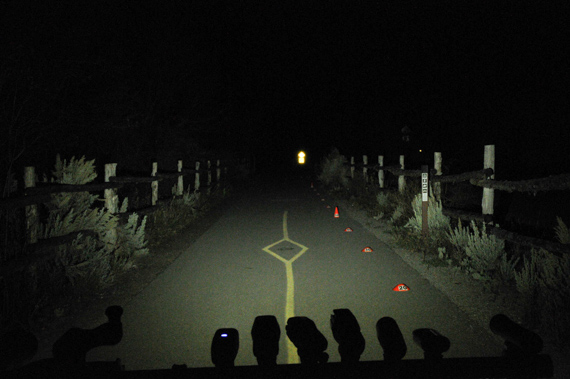
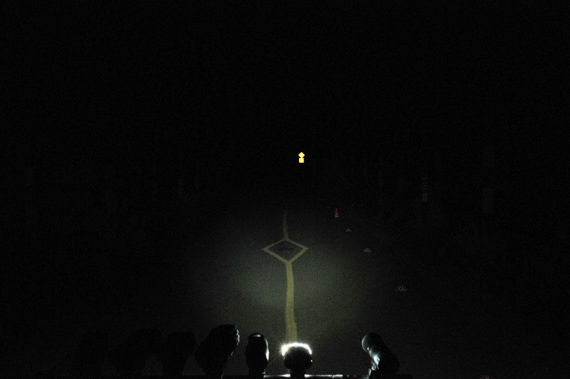
Beam Quality
Both for safety, and for seeing your surroundings, the best lenses use optics to create a beam that not only illuminates far ahead of you, but is also wide and evenly lights what's in front of you. We measured each products' beam diameter, distance, and photographed its beam pattern. The photos below should give you a sense of the variation in bike light optics.
Of all the contenders tested the Niterider Pro 1800 has the best overall beam pattern. It blows the rest away but is one of the heaviest and most expensive at nearly $300. Based on our testing, we think most people looking for the best option for commuting will narrow it down to a showdown between the Cygolite Expilion 850, (available for just under $140) and the NiteRider Lumina 750 (which sells around $100).
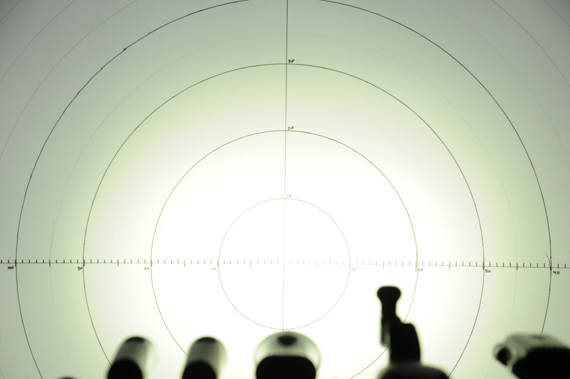
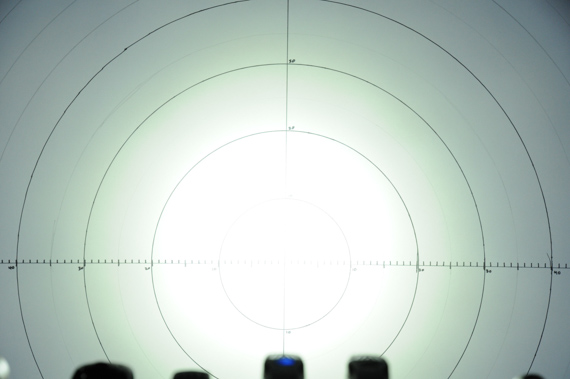
Portability
We scored portability on five variables:
- ease of removal while at the bike rack
- size and weight (can you slip it into a bag or jacket pocket?)
- ease of install/moving from one bike to another
- pivot (portable to different mount)
- helmet compatible
We put most of the emphasis on the first two: how easy is the light to remove after locking your bike up at a rack, and the size and weight. Several of these models cost $100 or more, and you will likely want to quickly remove it from your handlebar at the end any outing.
Smaller size and lighter weight are universally desirable attributes. More weight makes it more you've got to pedal up any hill. Larger size (and heavier weight) are more burdensome to carry and store when not in use. The designs we tested here range from the CatEye HL-EL 135 at 3.4 ounces to the NiteRider Pro at just over a pound.
The NiteRider Pro 1800 is the largest, heaviest and most time consuming to move. While it is the highest scoring overall because of its beam quality and distance, it receives a score of 2 for portability, so that (and the $300 price tag) might scare some commuters away.
Among top overall performers, the most portable is clearly the Light and Motion Vis 360+ which is the only contender to score a 9 in this category, followed by five competitors scoring an 8 out of 10. Both the Light and Motion Urban 800 and 350 models are some of the easiest designs tested to move from bike to bike and install. They also come in a relatively compact package for their beam power and easily slide into most pockets. The Lumina 750 and 550 models are a little heavier but are among the easiest to slide on and off their bar mount. With a little practice, the NiteRider can easily be removed with one hand due to the smooth on and off glide. Both Cygolite Metro models stumbled a bit here: it takes much more hand strength than the competition to release; removing it requires a very firm push on the release tab, much more force than competing models require.
In the ultralight category, the CatEye HL-EL 135 is the lightest, followed by the Knog Blinder Arc 1.7 as the most compact. The Knog Blinder Arc is one of the models scoring an 8 of 10 in this category for its easy on and off mount, which can easily be done single handed.
Mount Type Impacts Portability
The type of mount has a tremendous influence on portability as many commuters install and remove lights multiple times a day. Helmet mounted designs (like the Vis 360+) are the most convenient for commuting because they allow you to either remove the light from your helmet (if you lock your helmet with your bike) or keep it attached to your helmet, which requires zero additional effort.
Our favorite handlebar mount is found on the Light and Motion Urban and Nightrider Lumina series. The Light and Motion uses a tool-less adjustable rubber strap that's attached to the light; the low profile mount comes with you when you remove it. This has the advantage of being quick to transfer from one bike to another and it leaves your handlebar uncluttered when it's not attached.
The majority of the designs we tested slide onto a mount that is fixed to your handlebar. Though all are tool-less designs, some are a real pain to move from bike to bike. The NiteRider Lumina series went on easily and, once installed, allows you to easily slide on and off with one hand. An attached mount is best for mountain biking because it can be cinched very tight so that it stays stable through the extreme vibrations encountered while jumping and thumping off road.
For mountain biking, the need for long battery life and very high brightness force most good mountain bike model designs to use large external batteries that are relatively time-consuming to install. For this reason, the NiteRider Pro 1800 is the least portable tested.
The ability to swivel a handlebar mounted model can be tremendously useful for commuting because it allows you to illuminate street signs or find house numbers without stopping or turning your handlebar. Of all models tested, the Light and Motion Urban 350 and 800 are our favorite swivel mounts because they spin smoothly, and a full 360 degrees.
Battery type also has a significant influence on ease of use. Batteries are usually either integrated into the design or mounted externally. USB rechargeable batteries are the most convenient because you can charge them just about anywhere, including with your favorite solar power bank or battery bank, and you don't need to carry batteries or spend money buying them. The Knog Blinder Arc 1.7 was the only product tested with a very convenient feature: a built-in USB charger.
Some products, such as the Bright Eyes Rechargeable 1200, have illuminated power buttons that make it easier to adjust levels on the go, find in the dark and with gloves on. This is a small feature that our testers wish were incorporated into every model across the board.
Battery Life
We don't rely on manufacturer claims: we test battery life ourselves and plot maximum beam distance over time. You can read the full details of our testing methodology in the How We Test section of this review. For a deeper education in battery life, read our Headlamp Review and our article on Why Headlamp Claims are Deceptive.
There are three key considerations in battery life:
- beam power over time
- USB rechargeable vs. AAA and AA battery powered
- regulated vs. non-regulated beams
Beam Power over Time
Beam power is not consistent over time. Most lights are only their brightest for the first 1-5% of their overall run time. For the remaining 95-99% of the time, they are either slowly degrading, degrading fast and then holding steady, or a combination of the two. Keep this in mind when planning your night ride. Some products like the NightRider Pro 1800 lose their strength early but then give almost 5 hours of powerful illumination. Many others slowly degrade and then fall off a cliff after just over an hour.
Rechargeable vs. AAA and AA batteries
When looking at our scores for battery life, you may be surprised how the Lumina 750 earns only a 5 while those scoring the highest for battery life are often the lowest scoring overall, like the Cateye HL-EL135. Keep in mind two things: first, times are measured while each light is on in its brightest mode. The Lumina 750 only runs for 1.7 hours in bright mode but can be made to last much longer in a lower setting. Second, the models with the longest battery lives require replacing lithium-ion batteries. Yes, the HL-EL lasts 38 hours in our test, but it did so with a very dim beam to start with and requires replacing batteries after it runs out. Most commuters prefer USB rechargeable models because those products typically have the best beam performance, and even though they only last 1-2 hours in high mode, they are easy to recharge during work or at the end of the day.
Of the rechargeable models, the NiteRider Pro 1800, with its massive external battery, lasted the longest at almost 4 hours and did so with an impressive 160-meters of beam distance. Of the remaining USB rechargeable models, most last about 1.5 hours before either drastically degrading or shutting off altogether.Ask an Expert: Cameron Millard
Colorado transplant, Cameron Millard, moved from Maine ten years ago to live an active lifestyle in the Rocky Mountains. Embraced by a community of hard-core cyclists and surrounded by world-class mountain bike events such as the Leadville Trail 100, Colorado Trail Race (500+ miles), and the Vapor Trail 125, he took to the sport of endurance mountain biking and continues to cross those finish lines. For three years, he has raced the Vapor Trail 125 in Salida, Colorado; the 125-mile race has a 10:00 pm start mandating experience and skill that is limited by the glow of a bike light or two. In 2013, he rode his mountain bike over 560 miles with 70,000 feet of elevation gain along the Colorado Trail; the rules are simple- it is a self-supported race, no pre-arranged support except for post office mail drops, and no breaking laws along the way. More than six days spent biking this trail was life changing for Millard. Who better than Millard to offer expert advice on biking at night around town and while pedaling through endurance races?
Are your expectations for a bike light that you cruise around town with the same as what you will race with?
I am happy to cruise around town with some very basic lights, mostly for visibility from cars. Racing requires much better lighting systems that can illuminate a single track and remain bright all night.
For commuting and biking around town, a less expensive light system is sufficient. For racing and overnight rides, I recommend considering how long you will be out, how much light you will need (short summer nights and full moons), and what type of system will accommodate your needs. Be prepared to spend hundreds of dollars or more on a top racing setup.
Riding at night is awesome and the level of your interest/commitment/riding style will determine the kind of lighting you need.
How did you transition from racing in daylight to signing up for overnight bike races?
I've been night riding since high school when rides would last until after dark. 24-hours of Moab was my first experience racing at night. The 24-hour format is kind of going away, but plenty of rides and racing still take place at night. Riding my bike at night is the best way to increase the progression of endurance riding; it makes sense to ride at night if you want to cover long distances.
With the experience you have of racing in the Vapor Trail races 3 times, how do you measure the risk of night riding?
There is a lot that can go wrong at night. Doing the Vapor Trail and Colorado Trail Race both involve a lot of night riding through technical terrain- this demands serious focus which can be a challenge, especially when you are accustomed to sleeping at night, not riding a bike for many miles at night. Its exhilarating to shred singletrack at night; it's a whole different experience than riding during the day. My riding partner and I did a lot of night riding this summer, mostly because it was convenient with our work schedules. Trails I have ridden a hundred times can be way more challenging at night; it is not without high risk.
Is it challenging to ride a long race that transitions from daylight to dark?
Good bike lights are critical to vision and mental acuity during the night. I combine good lights with transition sunglasses to help shift to lower light conditions. During longer events that start in daylight, I would only have enough mental stamina to ride until 10 or 11 pm before I began to feel cross-eyed. Excellent lighting is essential.
During full moonlight, I have raced (uphill) without my lights on but you definitely need them when descending.
What is the difference between biking with a headlamp versus a bike light?
Bike lights can be configured to go on the handlebars and the helmet; the mounting systems are the distinguishing difference. Bike lights will typically be more powerful than standard headlamps and offer more focused or diffuse beam patterns depending on whether they are meant for the helmet or handlebars.
What are the most important features to look for in a bike light?
A bike light should be powerful with light quality that is appropriate for the terrain and conditions. I like a wider spread pattern on the handlebars and a focused light on the helmet. I value lightweight, durability, and simplicity for racing. There are many good light manufacturers. I've experimented with different systems: wearing a headlamp, finding a balance between weight and necessity which resulted in sub-par reliability, and have had experiences with lights going out during night races- that is a terrible situation to be in! You always want a backup light.
For mounting systems, avoid cheap plastic components. Rubberband style mounts are good.
Consider how often you will remove the mounting system- zip tie mounts are a hassle to remove.
Having at least 400 lumens is important, but so is run time, light quality, and beam pattern. I recommend trying a few different lights mounted on the handlebars, helmet, and both to find a combination that works for you.
Be sure to experiment with the lighting systems before committing to a race so that you know it suits the terrain, conditions, and your personal needs.
—Gentrye Houghton and RJ Spurrier



